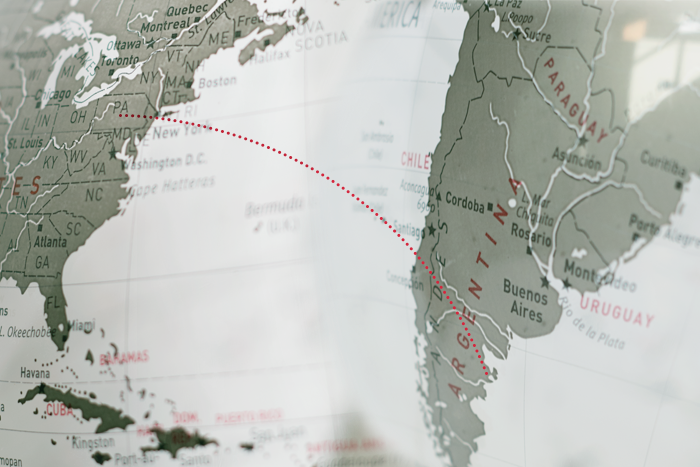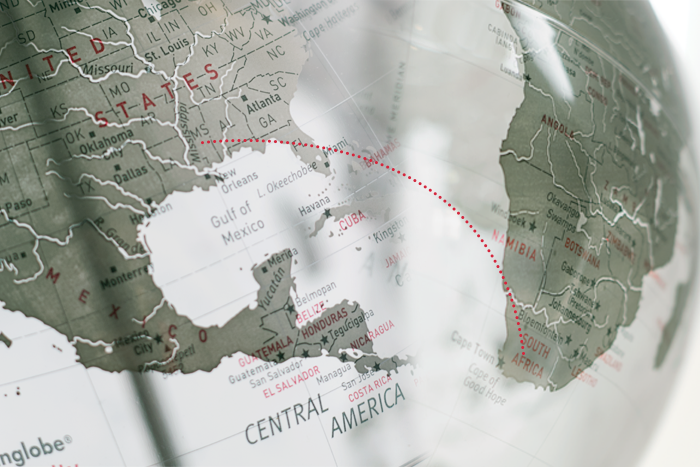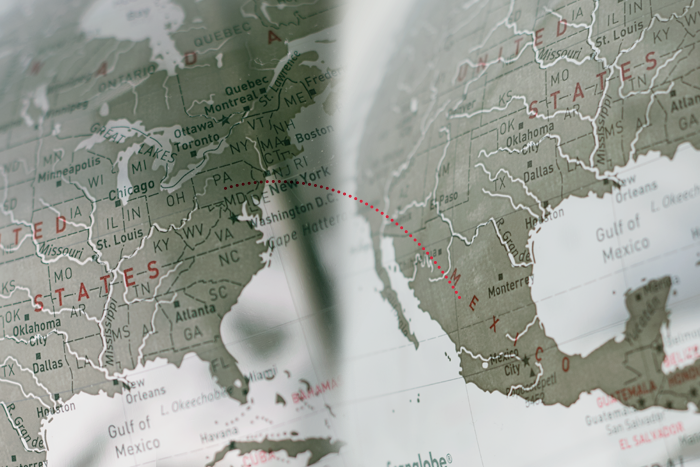Just Weight
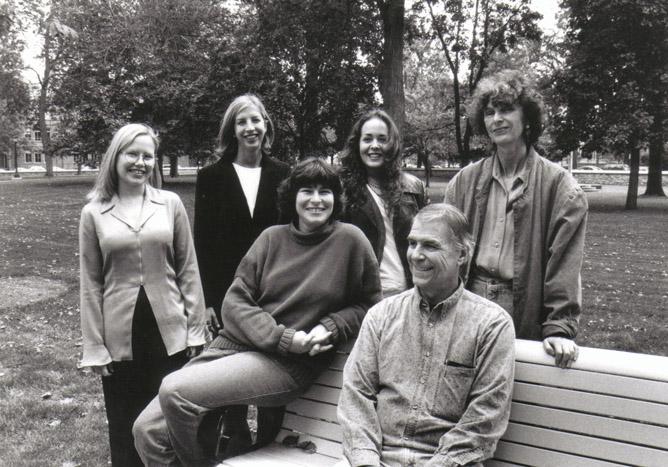
Developed in 1996 by Sharon O'Brien (far right, standing), Chuck Barone (sitting) and Susan Rose '77 (center, sitting), the American Mosaic Steelton Project led to programs that span the globe today. Photo courtesy of the Community Studies Center.
The 20th anniversary of the American and global Mosaic program draws reflections, celebrations
by Michelle Simmons
Some time in the middle of the two weeks that Professor of History Marcelo Borges and the students in the 2003 Patagonia Mosaic were spending in Comodoro Rivadavia, Argentina, he received a call from a woman telling him she had heard about the project through a mutual connection, and she had some photographs he might be interested in. Could they come to her house that afternoon?
“We looked at our schedule, and it was really packed and full,” Borges recalls. Despite the hectic pace, they managed to fit in a visit. “So we go, and this person starts bringing out to the dining table box after box after box of photographs.”
The boxes were filled with albums of photos that she had recovered from the trash, when the oil company she worked for transitioned from state-owned to private. The pictures represented decades of memory of work in the oil company. “They didn’t know what to do with the pictures—nobody wanted them,” he says. “She had worked for this company all her life as a nurse, felt attached to the company. When someone told her about the photographs, she just rescued everything and took it home.”
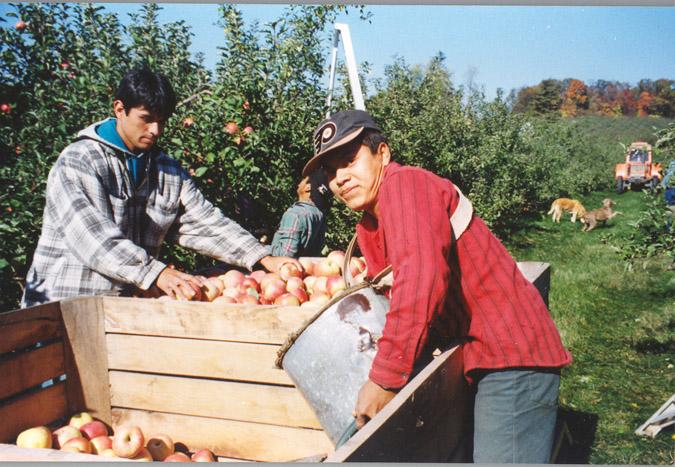
The Mexican Migration Mosaics (1998, 2003 and 2011) focused on migrant farm workers, their families and communities in nearby Adams County and in Peribán in Michoacán, Mexico. Photo courtesy of the Community Studies Center.
Borges, along with John Osborne, professor emeritus of history, worked with the students to digitize as many of those photos as possible and, when they returned to campus, set about cataloging those photos and transcribing the dozens of oral-history interviews they had conducted while in Argentina. All of them are now archived at Dickinson’s Community Studies Center and available to researchers around the world, as well as the Comodoro Rivadavia community itself.
It’s moments like those—the relationships, the reciprocity, the “small epiphanies and the results of explorations that could be anywhere,” as Borges calls them, that defined the Mosaic program for him. “You’re learning from the people in that particular community who know a lot more than you do,” he says. “You’re learning from lived experiences.”
Oral history can trace its origins to Herodotus, or perhaps even as far back as the beginning of language and culture, when elders shared their stories, skills and visions with younger generations. “In terms of people being willing to talk with you and give you their oral history, it’s a gift,” says Susan Rose ’77, professor of sociology and director of the Community Studies Center. “We use the term ‘narrator.’ We don’t use ‘subject.’ The sense of the narrator is that they are the experts of their own lives. It’s learning about other people, and in the process also learning about yourself.”
Twenty years ago, Rose, along with Sharon O’Brien, professor of American studies and English, and Chuck Barone, professor of economics, developed the first Mosaic program, what would become a model for doing oral history well, for creating communities of inquiry and opening the door to an undergraduate academic experience that many had never imagined was possible.
The seeds for the Mosaic program were germinated during a summer’s worth of backyard conversations at O’Brien’s home. Rose, Barone and O’Brien proposed co-teaching three integrated units that incorporated community studies (Rose), political economy (Barone) and memoir and narrative (O’Brien). In spring 1996, the experimental—and experiential—four-credit course American Mosaic Steelton Project was born, with 25 students and three faculty leaders: six weeks of intensive reading, lectures, workshops and discussion, followed by seven weeks of immersive field work and culminating in a final collaborative project.
“Dickinson had a strong global-education program, but we were doing little in terms of diversity either on campus or about U.S. pluralism,” Rose recalls. “We were really interested in class as well as race and gender. We thought about a number of things, but it was brainstorming over time.”
Why Steelton? In the 1990s, the Bethlehem Steel company town, one of the most multiethnic communities in Pennsylvania, was dealing with the effects of globalization and deindustrialization. With a heavy Serbian and Croatian population, its members were trying to make sense of the sectarian violence and genocide following the breakup of Yugoslavia. The local Roman Catholic diocese had just announced the closing of five parishes in the town. To say that racial and ethnic tensions were high was an understatement.
Yet Dickinson students, in their interviews, also found a community — across generations, races, classes and ethnicities—that shared stories, hardships, recipes, friendships. As the students interviewed retired steelworkers and Croatian parishioners, they also mentored Steelton-Highspire elementary and high-school students, who in turn interviewed their own families. From there, the Mosaic program grew to encompass a variety of communities, curricular models and research topics that spanned the globe: Mexico, Argentina, Venezuela, Peru, Ghana, Cuba, Morocco, South Africa, France, Spain, Denmark, to name a few.
What, exactly, is a Mosaic program? The overview describes Mosaics as “intensive, interdisciplinary, semester‐long research programs designed around ethnographic fieldwork and immersion in domestic and global communities.” Generally, a Mosaic is centered on a specific research question, theme or community, with interconnected courses co-taught by several faculty members, a discrete period of fieldwork (whether throughout the semester, during a winter or spring break or over the summer) and a final project.
From the beginning, the Mosaic program proved to be uniquely adaptable and protean. The original Steelton Mosaic, for example, focused on a company town relatively close to campus; but an equally interesting company town, Comodoro Rivadavia, Argentina, became the location for several Patagonia Mosaics, in 2001, 2003 and 2005. In the 2008 Comparative Black Liberation Movements Mosaic, students and faculty studied the anti-apartheid movement in South Africa and the civil rights movement in the Mississippi Delta —a project that encompassed a summer and fall semester, thousands of miles traveled and five disciplines: history, music, Africana studies, sociology, anthropology and American studies.
For Ryan Koons ’10, the 20-hour flight to South Africa was the first time he had been on a plane and his first time outside of North America. “It’s one of the reasons I decided to become an ethnographer,” he recalls. “After you’ve spent some time in and working with plural cultures, you begin to get an underlying sense of humanity—from what it means to be a human in South Africa, in the U.S., in Cameroon, Canada, wherever, to being a human being, period.”
Koons, a music major, had been drifting a bit academically when he decided to sign on to the Mosaic. With an interest in ethnomusicology, he and classmate Atandi Anyona ’10 collected hours of music and interviews—including with contemporary blues man Bill “Howlin’ Mad” Perry—and created two podcasts for the Mosaic’s archive. Now a Ph.D. candidate in the Department of Ethnomusicology at the University of California-Los Angeles, Koons says, “I can safely say, had I not participated in the Mosaic, I would not have been accepted in the UCLA graduate program, the biggest and oldest ethnomusicology program in the world.”
In 2009, Neil Leary, director of the Center for Sustainability Education, had led a group of students to Copenhagen, Denmark, for the United Nations’ 15th Annual Climate Change Conference. The experience had been enlightening—and exhausting. He wasn’t sure he wanted to do it again. But then he had a conversation with Rose, and ended up working with Professor of Earth Sciences Jeff Niemitz and Associate Professor of History Jeremy Ball (whose research interests lie in African political and ecological history and played an integral part in the 2008 Black Liberation Mosaic) to offer a new Mosaic built around the 17th annual conference (2011), this time in Durban, South Africa.
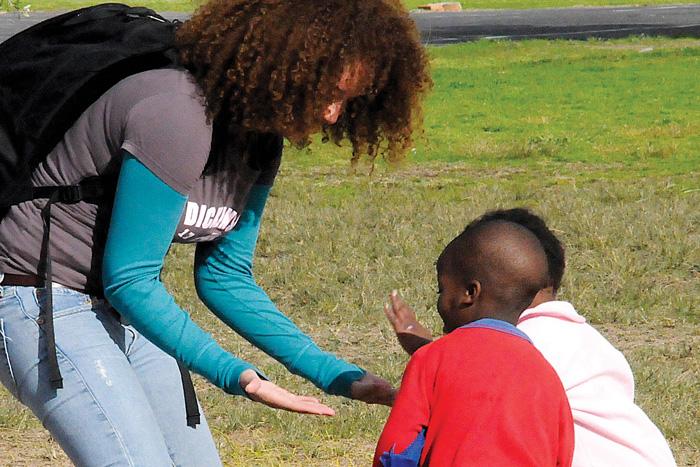
The 2008 Comparative Black Liberation Movements Mosaic took students from the Mississippi Delta to King William’s Town, South Africa. Pictured here is one of the participants, Flosha Tejada ’11, who is now college placement coordinator at Uncommon Schools in New York. Photo courtesy of the Community Studies Center.
“I like that aspect of designing a Mosaic that allows students to come at it from a variety of perspectives, disciplines and majors,” Leary says. “What I’ve been doing somewhat fits the mold of what the original idea was for a Mosaic: We’re doing fieldwork, and the students are trained in social-science research methods, doing interviews. In this case they’re interviewing people who are part of a community that’s unlike any of the other communities that a Mosaic has looked at. It’s a community of folks from Africa, South Asia, Southeast Asia, North America, Europe, small island states—government representatives, civil society representatives, environmentalists, business people, all coming together to try to figure out how we’re going to collectively address this problem of climate change.”
The group stayed an extra week afterward, doing service work in Makaphutu Children’s Village, a community for children affected by AIDS/HIV. For Tim Damon ’12, the experience altered the course of his future. As the group was distributing food packets, one community organizer turned to him and said, “I can’t do this anymore. Here, you decide who gets the last two packs of grain.” Before Damon had a chance to respond, he was surrounded, and the two packs disappeared into the crowd.
“I was not at all prepared for that,” he says of the experience of coming face-to-face with extreme poverty. “From there, I knew that I had to look into the development aspect.” The law & policy major went on to earn a master’s in climate change and international development at the University of East Anglia.
Since then, he’s returned to the Climate Change Conference, twice, as a delegate for SustainUS, a youth-led advocacy organization focused on advancing justice and sustainability. “The Mosaic gave me the chance to delve deeply and critically into one of the most pressing problems our species is facing today,” he says. “It also exposed me to the other greatest problem. We can’t allow climate change and development to be mutually exclusive. We need to live within the boundaries of nature; at the same time, it’s inexcusable to live like we do in the U.S., surrounded by poverty.”
There’s an emotional weight in terms of the interviewing,” Rose says. “It’s not just research for research’s sake. The whole idea is that you’re giving back to the community.”
For Lauren Ashley Smith ’06, who participated in the 2003 Mexican Migration Mosaic, that weight took on literal dimensions. The program focused on migrant farm workers in nearby Adams County and in Peribán in Michoacán, Mexico. “I remember the first time I felt the weight of the bags the apple pickers in Adams County carry for hours at a time,” she says. “Apple picking takes on a whole new meaning when you feel how heavy and cumbersome the bag is.”
Smith’s Mosaic was the second of three to work with Adams County migrant farm workers, beginning with the 1998 American Mosaic Project. The 2003 program incorporated Peribán, the home town of many of the migrant worker interviewees; and the 2011 project focused on mapping migration routes, food security issues and the economics of the apple industry. Each Mosaic built on the previous one: Interviews during the 1998 Mosaic yielded relationships and information that led researchers to Peribán. That geographic and familial link in turn led students and faculty in the 2011 project to trace the workers’ migration routes, based on the growing seasons of specific produce: Florida to New Jersey, south to North Carolina and back north to Pennsylvania and Connecticut, and then west to Wisconsin and West Virginia.
“Intellectually and emotionally, the Mosaic experience shaped me,” Smith says. “Doing the Mosaic gave me the opportunity to witness and be part of cultural moments and experiences I will never forget. While in Mexico I was invited to weddings, birthday parties, cultural festivals, holiday celebrations, the home of a curandera (healer) and so much more. Those moments, for me, are invaluable.”
Rosemary McGunnigle-Gonzales ’01, a Ph.D. candidate in the sociology department at Columbia University, carries her 1998 Patagonia Mosaic experience wherever she goes. “I bring it with me into every classroom I step into, whether I’m the student or the teacher,” she says. “I bring it into many a casual conversation.”
After graduating from Dickinson, McGunnigle-Gonzales worked as a legal assistant before pursuing graduate work. During that time, she interviewed and worked with African and Latin American political asylum applicants, domestic-violence victims eligible for permanent U.S. residence and applicants for permanent residence under the Nicaraguan Adjustment and Central America Refugee Act.
The Mosaic program “gave me my identity as a documentarian of the world around me,” she notes, recalling a formative moment. “In Comodoro Rivadavia, I interviewed my host dad, a proud man about my father’s age, a man who I’d come to esteem and love as my ‘Papa Francisco.’ In talking about the suffering of his native Paraguay, he began to cry. I think I was afraid, and I wanted to give him an out, so I told him we didn’t have to talk about that if he didn’t want to. [Afterward,] watching the video onsite at the Bulgarian Association in Comodoro, Marcelo Borges’ feedback was ‘just wait.’ In the future, he said, ‘just wait.’ Let the person finish; let them work through it.
“In fact, my host dad had said, ‘no, no, no’ when I offered him that out,” she continues. “He wanted to speak. Borges’ advice means even more to me today than it did then when I was in my early 20s. We often see waiting, holding back as evidence of hesitation, as a sign of fear. And yet, it takes courage to wait and to listen. That advice has made me not only a better interviewer and a better scholar, but also a better friend and neighbor, a better daughter, spouse and parent and, quite simply, a better human being.”
Read more from the fall 2015 issue of Dickinson Magazine.
Learn More
Published November 13, 2015
